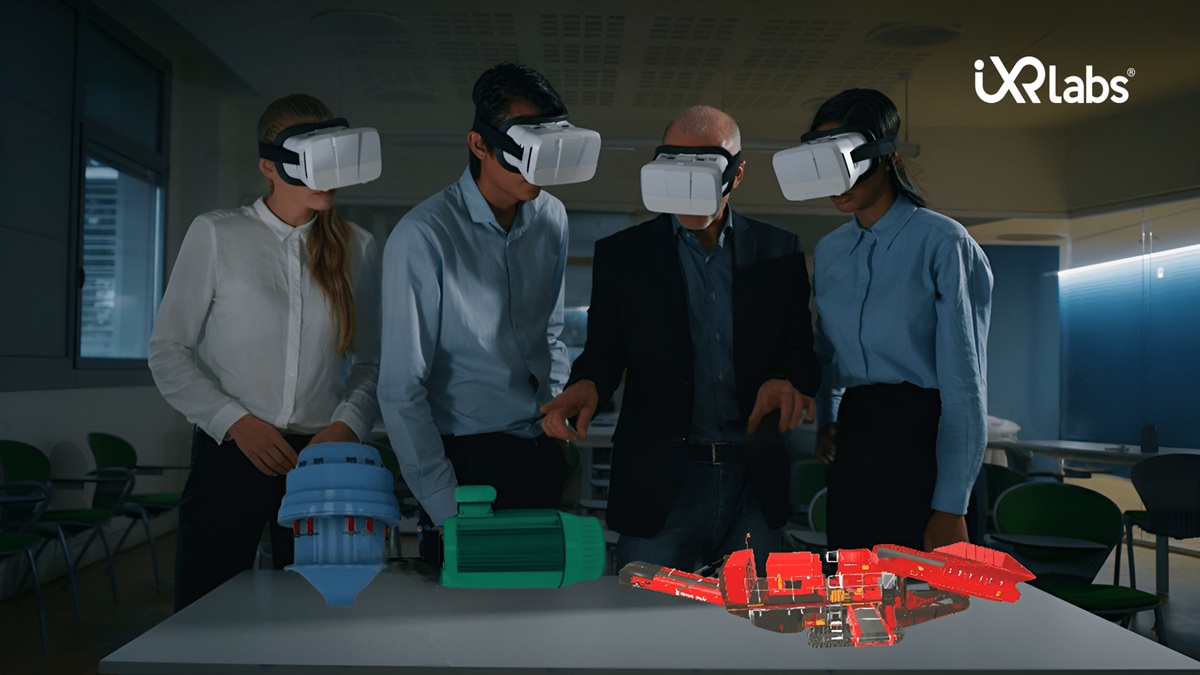The Beginner’s Guide to Using Virtual Biology Labs in Your Classroom

Recently, there was a report by the International Journal of Learning, Teaching and Educational Research on the use of virtual biology labs.
A survey of 26 articles revealed that virtual biology labs are extremely useful in teaching abstract concepts in biology like genetics and dissection. In general, 81% of students believe that virtual labs help increase their engagement levels.
In the evolving landscape of education, the challenge for educators is to deliver engaging, effective spatial learning experiences while managing resources efficiently.
Virtual Biology Labs are emerging as a powerful solution, enabling universities and colleges to enhance their teaching methods while maximizing return on investment (ROI).
This guide will delve into how these innovative tools can transform biology education by improving instructional strategies and reducing infrastructure costs.
What Are Virtual Biology Labs?
Virtual Biology Labs are innovative online environments that simulate biological experiments, providing students with hands-on learning experiences without the constraints of physical laboratories.
A virtual science lab utilizes multimedia applications and interactive simulations to replicate real-world scenarios, allowing learners to engage in complex biological processes safely and affordably.
Through adaptive learning algorithms and real-time data analytics, professors can track student performance across key learning outcomes and STEM competency metrics.
VR biology labs incorporate the latest technology in biology education like inquiry-based learning protocols, digital microscopy, and virtual dissection tools, enabling students to master core competencies in laboratory techniques.
So how is VR changing medical education? Before understanding that, it is important to first learn what makes biology educators all over the world even consider virtual learning methods.
Traditional Biology Education- The Loopholes
For a traditional biology lab serving 50 pupils, the initial set-up cost in the first year would be $6,00,000-$ 8,00,000. The factors include basic safety tools, IT systems, equipment packages, and construction charges.
This can go up to $12 million, highlighting the financial burden associated with traditional laboratory setups compared to the minimal costs of virtual labs.
Let us see how these coasts affect the overall ROI of the institutes-
Traditional labs require an annual operating cost of $90,000 – a financial burden that ties up vital institutional resources for decades.
Technologies like VR in gynecological training offer promising alternatives by providing immersive and interactive learning experiences at a fraction of the cost of traditional labs.
The average annual revenue of $50,000-100,000 barely covers operating costs, creating a daunting 70-year break-even timeline for institutes that could otherwise invest in growth and innovation.
Virtual labs eliminate major cost centers including $25,000-35,000 for lab technicians, $15,000-25,000 for consumables, and $8,000-12,000 for equipment maintenance while removing the 50-student physical capacity limit.
Over a 10-year period, traditional labs cost institutions approximately $1.6 million – funds that could be redirected toward expanding programs, improving digital infrastructure, or enhancing student experiences through scalable virtual alternatives.
This could make the students more job-ready by providing hands-on experiences.
Due to the lack of engaging programs and effective teaching methods for biology, 30-50% of students taking up biology majors drop out by the second year.
Virtual labs have contributed to a 34% decrease in DFW (Drop, Fail, Withdraw) rates across biology courses.
This suggests that improved engagement in university biology courses through virtual experiences can lead to better retention and success rates, ultimately supporting higher enrollment figures.
How do virtual biology labs help educators then? Let’s find out.
Teaching Methods Enhanced by Virtual Biology Labs In Biology Education
Let us look at some of the ways in which virtual biology labs are helping to transform science education-
Active Learning Strategies
Virtual labs promote active learning, where students engage directly with the material rather than passively receiving information. This method has been shown to increase retention rates significantly.
For instance, a study published in the Journal of Biological Education found that students using virtual labs scored an average of 15% higher on assessments compared to those who did not (Source: Journal of Biological Education).
Gamification and Simulations
According to empirical research, 20 out of 32 studies reviewed indicated a positive correlation between gamification and increased motivation and engagement among students in various subjects, including biology.
Are you ready to revolutionize your approach to biology education? Explore our range of virtual biology lab modules today
Students can participate in simulations that mimic real-world biological processes, such as genetic engineering or ecological interactions.
VR is also helpful when it comes to applications in medical education-anatomical studies, surgical skills training, and virtual consultations.
For example, at Georgia Tech, virtual labs for biology teachers are used to simulate genetic modification processes, resulting in improved understanding and retention of complex concepts.
Visual Learning Tools
Virtual labs in biology education provide visual representations of biological processes that can be difficult to grasp through traditional lectures.
By using animations and interactive models, educators can illustrate complex topics like cellular respiration or photosynthesis effectively.
This approach aligns with the principles of Education 4.0, which emphasizes personalized learning experiences tailored to individual student needs.
Collaborative Learning Environments
Virtual biology labs foster collaboration among students by allowing them to work together on experiments in a digital space.
This collaborative aspect mirrors real-world scientific research and prepares students for future careers in biology-related fields.
A study indicated that interactive biology lab simulations aid collaborative learning, with over 70% of students reporting improved teamwork skills when participating in virtual lab environments.
The collaborative aspect of virtual labs mirrors the principles of Education 4.0, which emphasizes personalized learning experiences tailored to individual student needs.
Immediate Feedback Mechanisms
One significant advantage of virtual labs is the ability to provide immediate feedback on experiments.
Unlike traditional lab settings where students may only have one chance to conduct an experiment, virtual labs allow them to retry and learn from their mistakes.
This iterative process enhances understanding and encourages a growth mindset among learners.
Use Cases Demonstrating Effective Teaching Methods
Let us look at some of the educational institutes that have successfully implemented virtual labs in biology education-
Case Study 1: University of California, Berkeley
The University of California, Berkeley integrated virtual biology labs into its curriculum to supplement traditional laboratory courses. By doing so, they reported a 40% increase in student engagement during lab sessions and a notable improvement in overall course performance.
Case Study 2: University of Illinois
The University of Illinois adopted virtual labs for biology teachers as part of its biology program, resulting in a rise in enrollment due to the appeal of flexible learning options that virtual labs provide.
Students appreciated the ability to conduct experiments at their own pace while still receiving quality instruction from faculty.
Case Study 3: Maynooth University
Maynooth University launched a project focused on virtual laboratories for chemical sciences aimed at serving up to 5,000 students.
The initiative not only enhanced engagement but also significantly reduced infrastructure costs associated with physical lab maintenance (Source: Maynooth University).
Conclusion
The integration of Virtual Biology Labs into your teaching strategy presents an opportunity not only to enhance student engagement but also to maximize ROI for educational institutions.
By adopting innovative technology in biology education such as active learning, gamification, and collaborative environments, educators can create enriching experiences that prepare students for future challenges while optimizing resource allocation.
As you consider integrating these technologies into your curriculum, remember that you are investing in both your students’ futures and your institution’s sustainability.




.png)
.png)